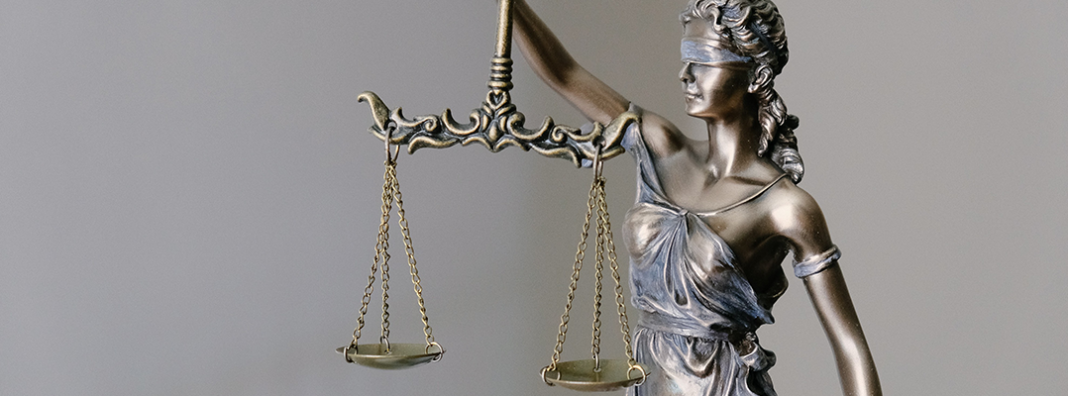
The debate over Free Speech on the Internet is a touchy issue, especially when we start talking about social media platforms and forums for democratic debate. Seemingly, everything boils down to a single question: Do you have a First Amendment right to social media, or not?
Over the years, lawyers and Constitutional scholars have expended considerable energy to explain why there is no Constitutional right to social media. The reason why, in a nutshell, is that social media platforms are private property, hosted on private servers, and the First Amendment places no burden on private property.
Things get interesting, though, when an elected official joins a social media site, especially when they do so to create a forum to interact with constituents. Under modern developments of the public forum doctrine, those constituents gain a limited Free Speech right to interact with that elected official’s social media account. In essence, an elected official cannot block a constituent from one of these accounts simply because they do not like the content they receive from constituents.
The trouble, however, in communicating this legal rule is the distracting rhetoric that comes from prominent elected officials. Rather than engaging with this emerging legal rule, some choose to claim a First Amendment right applies to all of social media, using passionate recitations of the Federalist Papers, the Declaration of Independence, and poor interpretations of the First Amendment to distract from the issue.
Until recently, close observers of the Supreme Court, like myself, have found comfort in the belief that even if these elected officials somehow put their rhetoric into law, “we will always have [the Courts].” At least, that was the case until the recent Supreme Court concurrence by Justice Thomas dispensed with modern legal developments and scholarship, rocking the boat evermore on the turbulent seas of First Amendment discourse.
The Public Forum Doctrine
To understand what the big deal is with Justice Thomas’ concurrence, it’s important to understand the legal developments that have transpired in the past four years.
This all started at the Supreme Court in the 2017 case Packingham v. North Carolina. Justice Kennedy, writing for the majority, put the power of words on full display when he described social media sites as the “vast democratic forums of the Internet.” The phrase is relatively tame, and Kennedy’s writing was impressive. But because it was the opinion of the highest court in the land, that simple phrase made a notable impact on the Internet Free Speech debate.
Close observers of the Supreme Court tried to read the tea leaves. The big question to emerge was: Where should the Court rule when the rights of a private social media company intersect with the rights of constituents who engage with a public official on social media?
The question began making its way through the federal courts.
In 2017, the Eastern District of Virginia heard Davison v. Randall, involving a member of a county board of supervisors who had blocked constituents from her Facebook page after they posted their disdain for her. The constituents claimed she had violated their First Amendment right to Free Speech by blocking them. The District Court ruled in favor of the constituents, and on appeal, the Fourth Circuit agreed.
Not long after, a group of Twitter users filed suit against President Trump in the Southern District of New York after he blocked them from his official White House Twitter account. The user group argued that the President had violated their First Amendment rights, just like the constituents in the Fourth Circuit case. The District Court ruled in the user group’s favor, and on appeal the Second Circuit agreed.
With the appellate court affirmations, a legal rule began emerging: If a public official blocks an individual from interacting with their official social media account, it is a violation of that individual’s rights under the First Amendment.
However, the Supreme Court breathed uncertainty into this rule last Monday morning when it vacated the holding in the Second Circuit Trump Twitter case. There have been some misguided interpretations to explain the Court’s ruling, but the whole case boils down to one fact: President Trump is no longer the President of the United States, meaning he can now block whoever he chooses.
It is disappointing for legal scholars who must now add a footnote to their First Amendment commentary, but in any ordinary case, that would be the end of it. But Justice Thomas added a twist to an otherwise careful, and typical development of the common law.
The Thomas concurrence and where it went wrong
In the 2017 Packingham case that started all of this, Thomas joined Justice Alito in a concurrence that expressed concern with “the Court’s loose rhetoric.” The Court’s two line opinion in last Monday’s decision seemed to be responsive to these concerns. But this time Justice Thomas took to the pen to write a concurrence using his own loose rhetoric.
“If part of the problem is private, concentrated control over online content and platforms available to the public,” Justice Thomas reasoned, “then part of the solution may be found in doctrines that limit the right of a private company to exclude.”
The solution Justice Thomas had to offer was a playbook for passing legislation that skirts the First Amendment and substitutes what he calls “old doctrine” for even older doctrine.
First, Justice Thomas suggests that legislators could regulate digital platforms like common carriers. The benefit of doing so is that common carriers are subject to “the general requirement to serve all comers.” Put plainly, that means no more blocking the President, any president, from Twitter. He argues that there is a point where a business “rise[s] from private to be of public concern. . . [and] a company’s ‘property is but its instrument, the means of rendering the service which has become of public interest.’” If that language feels a little out of date, that’s because it is. The case Justice Thomas quoted is from 1914. Moreover, he offers little to describe where that point of common carriage might be, other than a quick note that transportation and communications infrastructure fit the bill.
Thomas’ second suggestion revives an 1883 case interpreting the public accommodation doctrine, which applies to companies that “hold themselves out to be public.” The clear issue with this doctrine is the dreaded Terms of Service. While digital platforms hold themselves out for use by the public, they attach clear limitations to that relationship, even providing reasons for removal from the platforms.
Returning to the case decided by the Supreme Court last Monday, the issue before the Court was whether a group of Twitter users had their First Amendment rights violated by the President of the United States when he blocked them from his official Twitter account. The “concentrated control of so much speech” Thomas concerned himself with was not even remotely at issue.
Nonetheless, in the wake of Justice Thomas’ concurrence the probability that legislators will propose new bills to revive old doctrines like common carriage and public accommodation is probably high.
Approaching the rights of constituents to engage public officials on social media
What should be the standard for future policy discussion instead? Look no further than the suggestions offered in the concurrence Justice Thomas joined in Packingham.
The Justice was correct last Monday that we should not look to “old legal doctrine,” especially not as an avenue to regulate, as the Justices put it in 2017, the “‘full dimensions and vast potential’ of the Cyber Age.” Indeed, as Alito and Thomas once exclaimed, “Cyberspace is different from the physical world.”
Because the Internet is a fast-moving, constantly evolving technology, legislators and courts alike should “proceed circumspectly,” taking Internet regulation “one step at a time.” Centuries of legal development have shown that with time, and through careful adherence to procedure, the law can evolve to address problems in a way that is lasting and effective. The First Amendment implications of public officials blocking constituents from their social media accounts, for example, is an emerging legal standard that will continue developing through careful litigation in the lower courts until it is settled law.
As the other eight Justices of the Supreme Court expressed through their two-line opinion last Monday, the development of this area of the First Amendment at the lower court level is the right approach. It is regrettable, then, that Justice Thomas has not heeded his own admonition of caution. Caution, especially among our country’s legislators and jurists, is what we all need.

